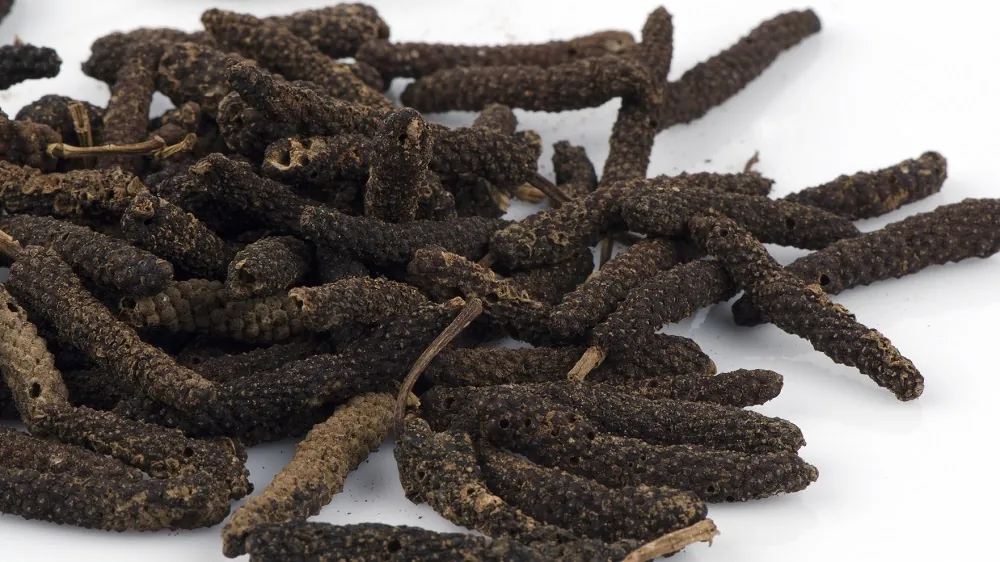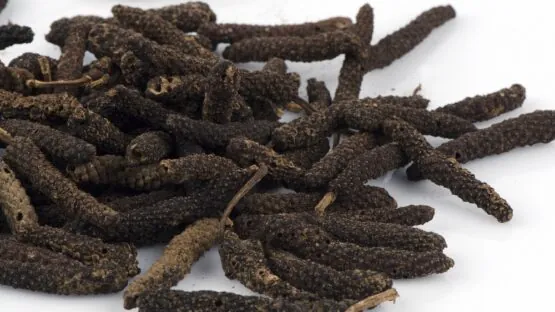Scientific Reports has published a study that used a computational approach to identify natural senotherapeutics that have a similar impact on gene expression as a known senotherapeutic drug, dasatinib [1].
Drug combinations for better treatments
Cellular senescence, a state in which cells cannot divide anymore but are still metabolically active and often display senescence-associated secretory phenotype (SASP), is one of the Hallmarks of Aging.
Senotherapeutics are drugs that aim to address the problem of cellular senescence. These drugs might target different cellular processes or proteins by directly slowing the senescent process, killing senescent cells, or modifying the SASP.
Since each senotherapeutic might have a different mechanism of action, it is reasonable to assume that combining two or more leads to better therapeutic results, as each one addresses the problem of senescence from different perspectives.
So far, the most commonly tested senolytic combination is the antitumor drug and tyrosine-kinase inhibitor dasatinib along with the polyphenol quercetin, which is commonly found in edible plants [2]. Unfortunately, dasatinib activity frequently leads to adverse side effects, such as skin irritation, fluid retention, reduction in blood cell production, and diarrhea [3]. Thus, researchers have sought a substitute with similar properties but minimal side effects.
Searching for gene expression similarities
In this paper, the authors used computational approaches to identify natural senotherapeutic candidates that have similar properties to dasatinib. They followed a computational approach as they believe that traditional drug discovery methods are “time-consuming, costly, and labor-intense process with high failure rates” [4].
One such computational approach, drug repurposing, can use information about existing drugs to find new applications for them [5]. In this case, the authors aimed to identify a drug that induces a gene expression profile similar to dasatinib. They hypothesized that if drugs induce similar gene expression profiles, they most likely act in a similar way to treat a given condition.
The authors identified dasatinib studies that analyzed and publicly shared gene expression data following the dasatinib treatment. Those included studies of leukemia, prostate, and breast cancer cell lines. Based on this data, they identified differentially expressed genes impacted by desatinib treatment. They focused especially on the senescence- and aging-associated genes.
Following this, the authors computationally searched through databases containing over a million gene expression profiles showing responses of human cell lines to treatments with different chemical agents [6]. Their aim was to find dasatinib analogs and, based on gene expression similarities, hypothesize about the potential mechanisms of action that dasatinib and newly found drugs share.
Using the three different datasets, they identified a few candidates and manually curated the list to choose the natural compounds. These included piperlongumine, parthenolide, curcumin, and phloretin, with piperlongumine being the most promising candidate. Those compounds are all found in common foods.
Killing through apoptosis
The authors’ analysis suggested that “mechanisms of piperlongumine are related to senescence and apoptosis,” a process of programmed cell death. The authors acknowledge that they used cancer cell line datasets for the analysis. However, they also point out that cancer and senescent cells share some pro-survival pathways. Since numerous studies have investigated the mechanism of apoptosis induction by piperlongumine in cancer cells [7, 8], those studies and their data together make a stronger case to suggest that piperlongumine works by inducing apoptosis in senescent cells [9].
The authors also bring up some additional benefits of piperlongumine. The safety and efficacy of this natural compound have been previously tested with promising results [7]. Other studies have found that it is toxic to cancer cells and senescent cells with non-significant toxicity towards different cells [9].
Regarding the remaining three compounds the authors identified, phloretin, parthenolide, and curcumin, they didn’t thoroughly investigate the published literature to understand their mechanism of action, but their results again suggested associations with apoptosis, specifically in the case of curcumin.
The need for in vivo validation
The researchers acknowledge that this study has its limitations, the main one being it is a computational study, and further validation of their results in preclinical and clinical trials is essential to ascertain the therapeutic potential of identified compounds. Their approach also had some assumptions that need to be tested; for example, they assumed that the similarities of gene expression profiles tested in vitro will translate to similarities in the action of the compounds in vivo, which might not be the case since biological systems are very complex.
Despite those shortcomings, the newly identified senotherapeutics are great potential targets for more detailed testing, especially since they have already been under investigation for their potential anti-inflammatory, anti-cancer, and anti-aging properties.
Literature
[1] Meiners, F., Hinz, B., Boeckmann, L., Secci, R., Sueto, S., Kuepfer, L., Fuellen, G., & Barrantes, I. (2024). Computational identification of natural senotherapeutic compounds that mimic dasatinib based on gene expression data. Scientific reports, 14(1), 6286.
[2] Bravo L. (1998). Polyphenols: chemistry, dietary sources, metabolism, and nutritional significance.Nutrition reviews, 56(11), 317–333.
[3] Justice, J. N., Nambiar, A. M., Tchkonia, T., LeBrasseur, N. K., Pascual, R., Hashmi, S. K., Prata, L., Masternak, M. M., Kritchevsky, S. B., Musi, N., & Kirkland, J. L. (2019). Senolytics in idiopathic pulmonary fibrosis: Results from a first-in-human, open-label, pilot study. EBioMedicine, 40, 554–563.
[4] Everett J. R. (2015). Academic drug discovery: current status and prospects. Expert opinion on drug discovery, 10(9), 937–944.
[5] Jarada, T. N., Rokne, J. G., & Alhajj, R. (2020). A review of computational drug repositioning: strategies, approaches, opportunities, challenges, and directions.Journal of cheminformatics, 12(1), 46.
[6] Subramanian, A., Narayan, R., Corsello, S. M., Peck, D. D., Natoli, T. E., Lu, X., Gould, J., Davis, J. F., Tubelli, A. A., Asiedu, J. K., Lahr, D. L., Hirschman, J. E., Liu, Z., Donahue, M., Julian, B., Khan, M., Wadden, D., Smith, I. C., Lam, D., Liberzon, A., … Golub, T. R. (2017). A Next Generation Connectivity Map: L1000 Platform and the First 1,000,000 Profiles. Cell, 171(6), 1437–1452.e17.
[7] Kung, F. P., Lim, Y. P., Chao, W. Y., Zhang, Y. S., Yu, H. I., Tai, T. S., Lu, C. H., Chen, S. H., Li, Y. Z., Zhao, P. W., Yen, Y. P., & Lee, Y. R. (2021). Piperlongumine, a Potent Anticancer Phytotherapeutic, Induces Cell Cycle Arrest and Apoptosis In Vitro and In Vivo through the ROS/Akt Pathway in Human Thyroid Cancer Cells. Cancers, 13(17), 4266.
[8] Thongsom, S., Suginta, W., Lee, K. J., Choe, H., & Talabnin, C. (2017). Piperlongumine induces G2/M phase arrest and apoptosis in cholangiocarcinoma cells through the ROS-JNK-ERK signaling pathway. Apoptosis : an international journal on programmed cell death, 22(11), 1473–1484.
[9] Wang, Y., Chang, J., Liu, X., Zhang, X., Zhang, S., Zhang, X., Zhou, D., & Zheng, G. (2016). Discovery of piperlongumine as a potential novel lead for the development of senolytic agents. Aging, 8(11), 2915–2926.




